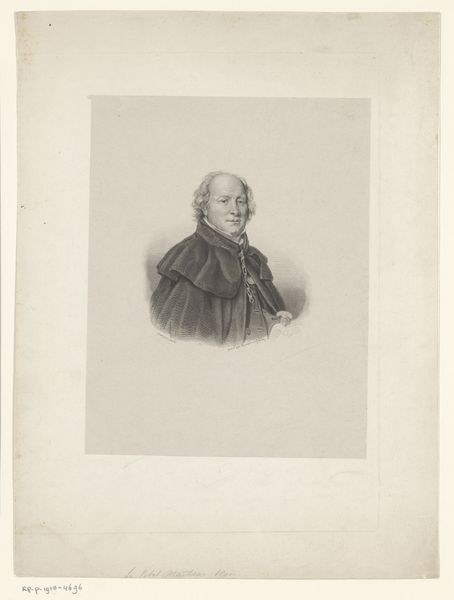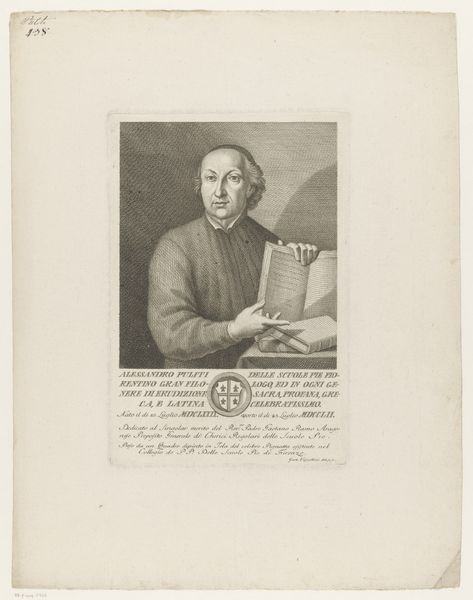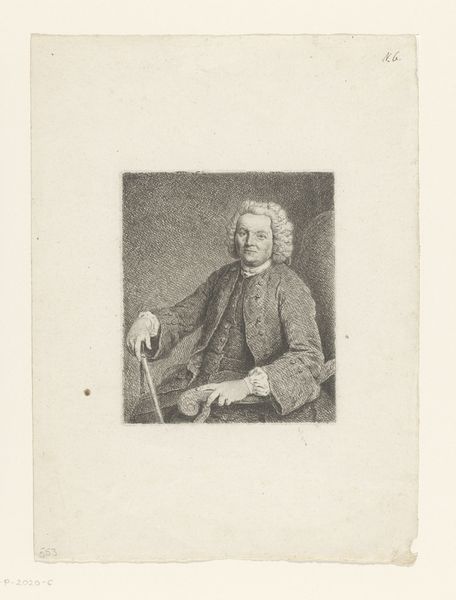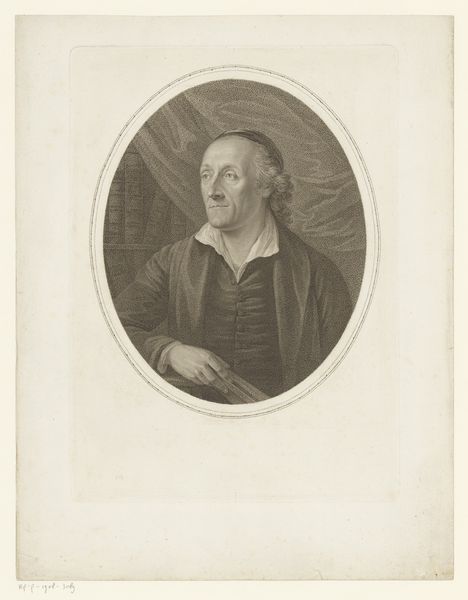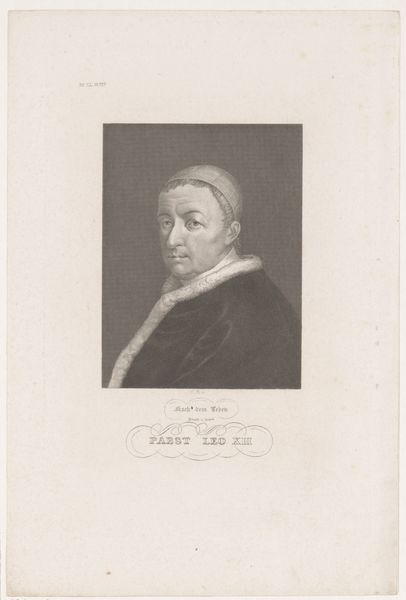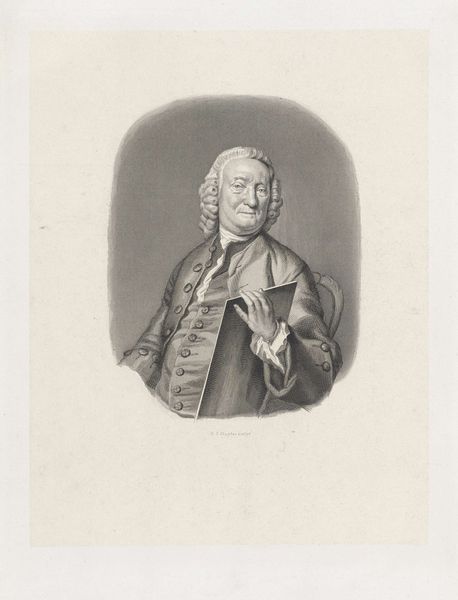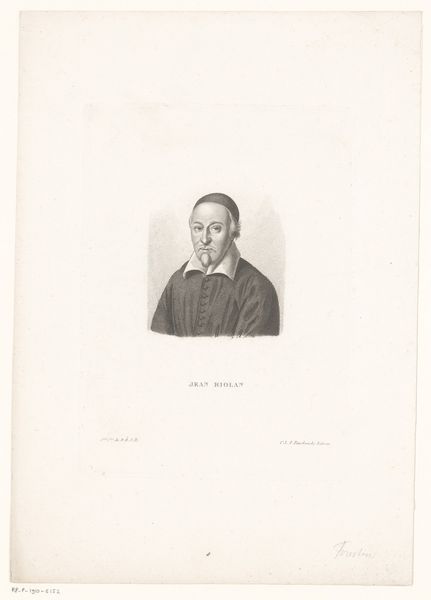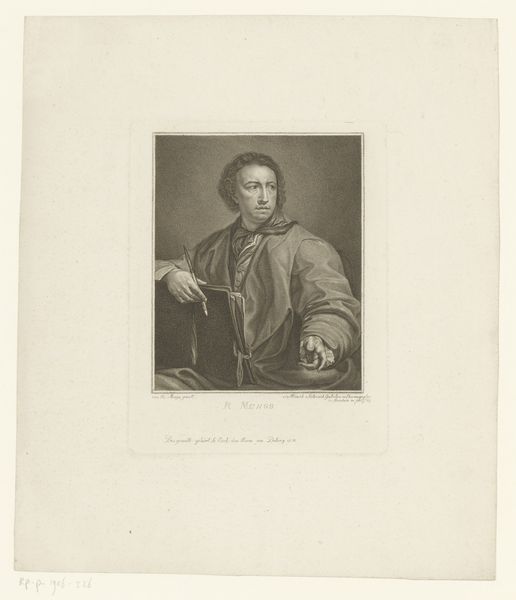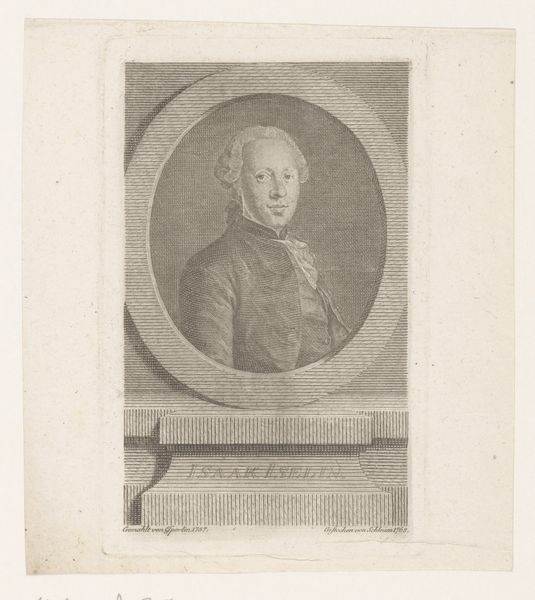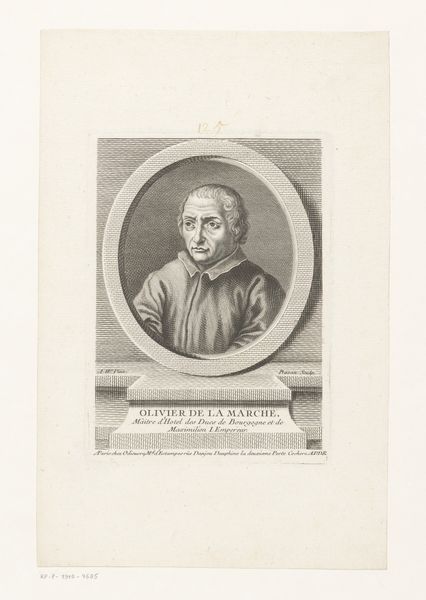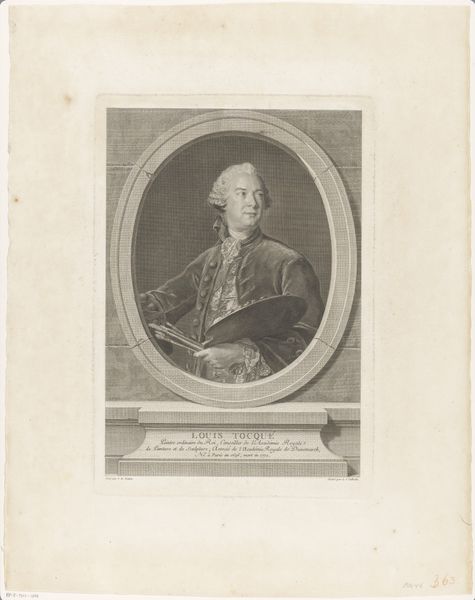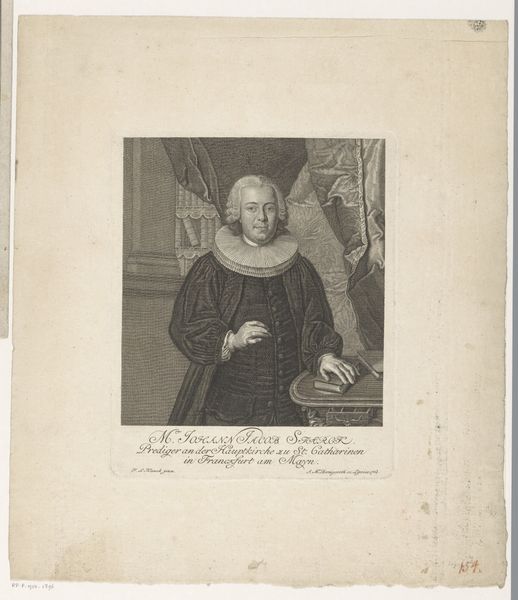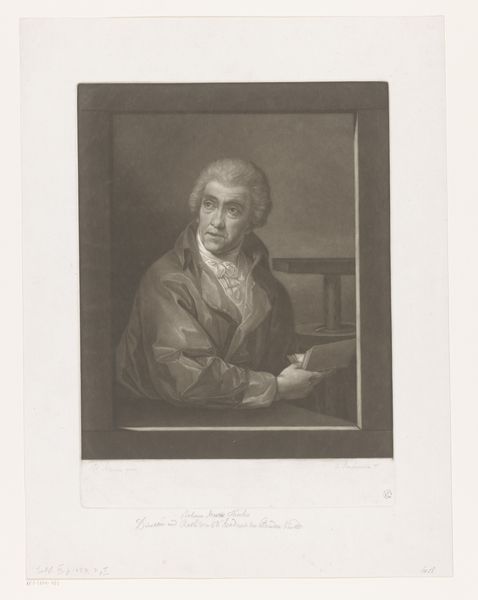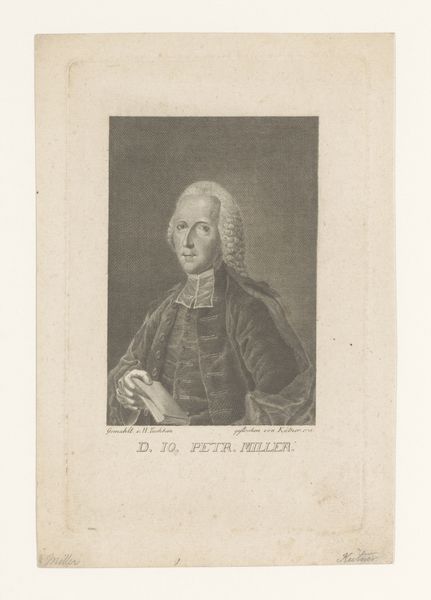
lithograph, print
#
beige
#
photo of handprinted image
#
yellowing
#
aged paper
#
yellowing background
#
photo restoration
#
lithograph
# print
#
light coloured
#
white palette
#
nude colour palette
#
soft colour palette
Dimensions: 592 mm (height) x 361 mm (width) (bladmaal)
Editor: So, this lithograph, "Peter Jørgen Frydendahl" from 1836, created by David Monies, is presented on aged paper, giving it a sort of quiet dignity. The subject holds what looks like a folded letter, but his gaze feels somewhat elusive. How do you interpret the symbols at play in this portrait? Curator: What strikes me is the ambiguity inherent in the "letter." Is it a symbol of communication, secrecy, or perhaps something more transactional, like a promissory note? Consider the cultural context: the rise of the merchant class, burgeoning literacy, and the growing importance of personal correspondence. What is being communicated here about Frydendahl’s status and inner world? What is he telling us by showing us only an object, an emblem of a life rather than something revealing about himself? Editor: I hadn’t considered it as potentially representing a financial document. I was too focused on the personal aspect, the almost hidden nature of what he holds. Curator: Exactly. Notice also how Monies positions Frydendahl within a shadowed background, almost as if his likeness emerges from memory itself. The soft color palette and the lithographic technique also evoke a certain nostalgia, blurring the lines between historical record and artistic interpretation. Perhaps the symbols carry psychological weight, acting as a bridge between the sitter’s present and a projected future of legacy. Editor: That’s fascinating. So, even the choice of technique contributes to the overall message about time and remembrance? Curator: Precisely. The seemingly simple portrait becomes a complex layering of meanings when viewed through the lens of symbolism and historical context. Editor: I'll definitely look at 19th-century portraiture differently now, recognizing that a portrait is not just a depiction. Curator: Indeed. It becomes a repository of cultural memory, a visual echo through time.
Comments
No comments
Be the first to comment and join the conversation on the ultimate creative platform.
